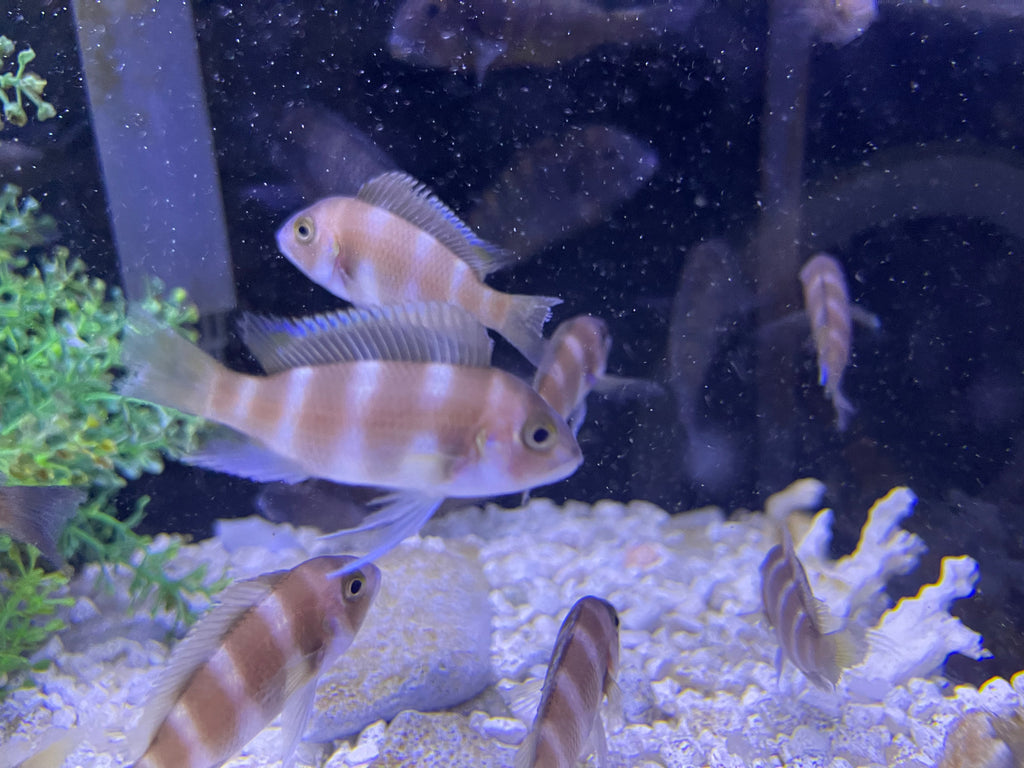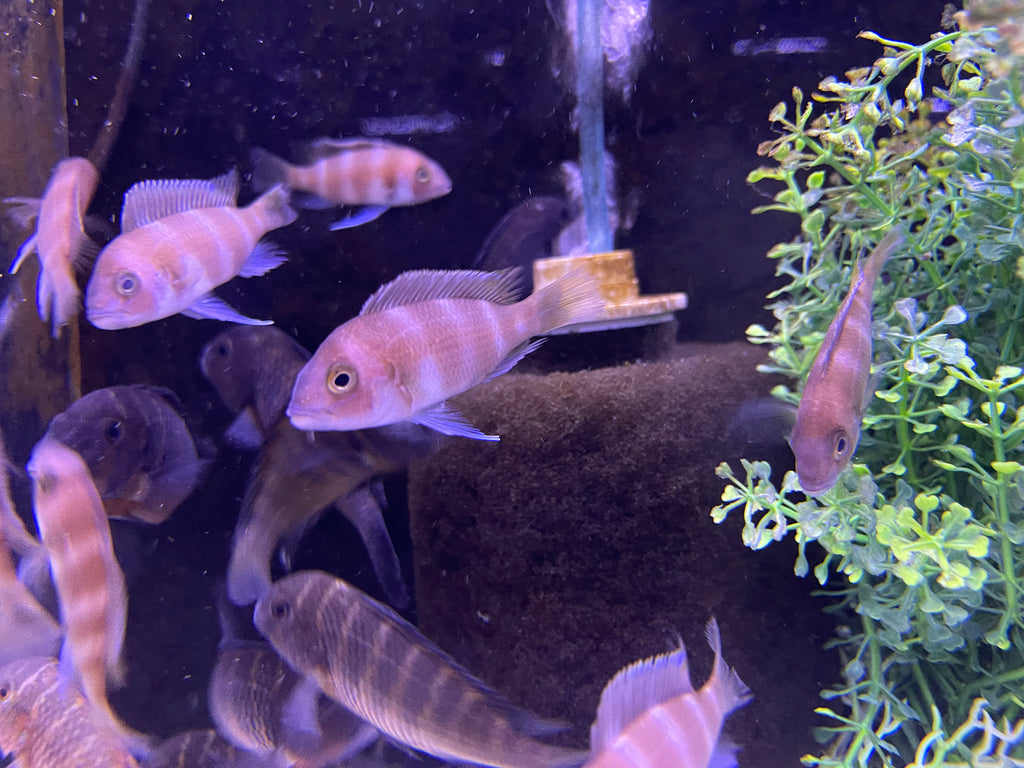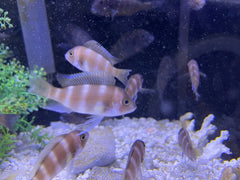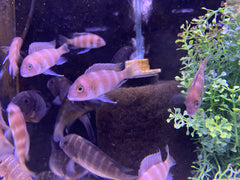The Frontosa cichlid, also known as Cyphotilapia frontosa, is a popular freshwater fish that belongs to the family Cichlidae. It is native to Lake Tanganyika in East Africa, specifically found along the rocky shorelines of the lake.
-
Appearance: Frontosa cichlids have a distinct and majestic appearance. They have a large, elongated body and a steep sloping forehead. Their most notable feature is a prominent hump on the males' foreheads, which develops as they mature. They display vertical black bars on a silver-blue or grayish background, which can vary depending on their location and age.
-
Size: Frontosa cichlids are known for their impressive size. In the wild, they can reach lengths of up to 14-16 inches (35-40 cm). In aquariums, they usually grow to around 10-12 inches (25-30 cm), although some individuals may grow even larger given optimal conditions.
-
Behavior: These cichlids are generally peaceful and relatively calm compared to other cichlid species. However, they can become territorial, especially during breeding and when establishing their hierarchy within a group. It is recommended to keep them in spacious tanks to provide ample swimming space and reduce territorial conflicts.
-
Tank Requirements: Frontosa cichlids require a large aquarium with plenty of hiding places and rocky structures to mimic their natural habitat. They prefer a sandy substrate and appreciate the presence of caves or rocky crevices where they can retreat. Maintaining water conditions similar to Lake Tanganyika is crucial, including a pH range of 7.8-9.0 and a temperature of 75-81°F (24-27°C).
-
Feeding: In the wild, Frontosa cichlids primarily feed on small fish and invertebrates. In aquariums, they can be fed a varied diet consisting of high-quality pellets, flakes, frozen foods like brine shrimp or bloodworms, and occasionally live or frozen small fish. Providing a balanced diet is essential for their health and coloration.
-
Breeding: Frontosa cichlids are mouthbrooders, meaning that the female will incubate the eggs in her mouth until they hatch. Breeding can be challenging, requiring the right conditions, compatible pairs, and adequate space. It is best to provide several females for a dominant male to distribute his attention and minimize aggression.
Frontosa cichlids are highly sought after by aquarium enthusiasts due to their impressive appearance and relatively peaceful nature. They require a dedicated aquarist who can provide them with suitable conditions and proper care.




